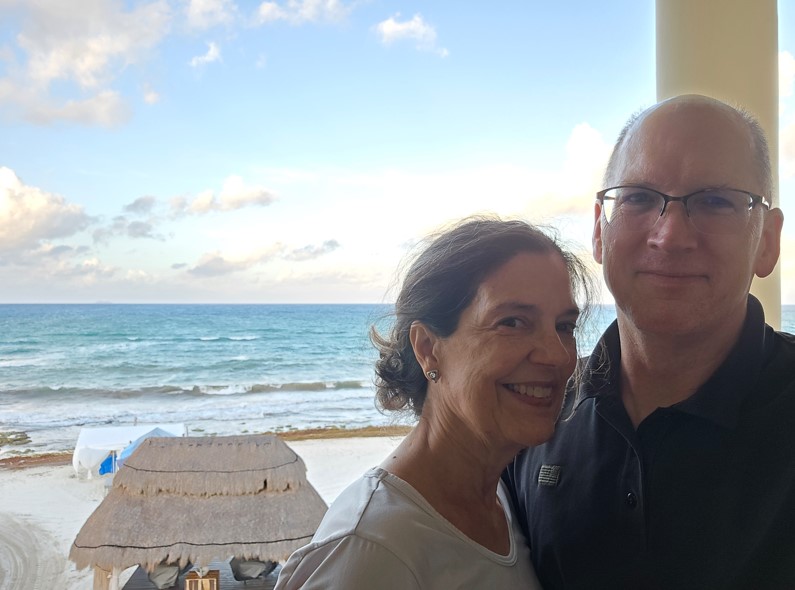
before it all went down
I’m sure you’ve heard the horror stories about tourists in Mexico who suffer illness or injury and have to fork out thousands of dollars to get medical treatment. We had heard about these nightmare scenarios and, in fact, before we left for Cancun, I read the State Department’s “Message to U.S. Citizens” issued on February 25, 2025 by the American Embassy in Mexico, which clearly stated this:
- Illness or accidents may require medical treatment or hospitalization. Private hospital prices can be higher than in the U.S. and may require upfront payment.
Ironically, as we were on the airplane flying to Cancun, I turned to Pat and asked, “did we buy travel insurance for this trip?” I know we had talked about it, and we always buy travel insurance. But in this case, the answer was NO. We just got busy and forgot to buy it, I guess.
BIG MISTAKE.

On our first night at the beautiful 5-star Iberostar Joia Paraiso, my husband had a blockage in his bladder that prevented him from being able to urinate. It worsened overnight, such that in the morning, he was in a great deal of pain, When he asked me to find a doctor, I ran like a crazy woman out of the room and found a maintenance worker, who spoke no English, who, bless him, was still able to communicate to me that I needed to call the Reception Desk, which I did. Thirty minutes later, a doctor came to our room, quickly examined my husband, and told us that he would have to go by ambulance to a Cancun hospital to get a catheter inserted right away.
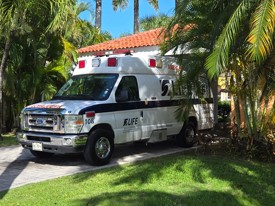
The ambulance ride was probably the most painful part of the experience for Pat. Without traffic, we probably could have gotten there in about half an hour, but since this was the rush hour on a weekday morning, the ambulance sat in bumper to bumper traffic. The ambulance driver couldn’t use his lights or siren since there was nowhere the vehicle could go anyway, so my poor husband had to endure a slow, bumpy ride to the Emergency Room at the Hospiten Cancun, which the literature in the waiting room describes as an “international hospital.”
It was a scary situation, not only because this trauma was happening in a foreign country where we couldn’t speak the language. (Our rudimentary knowledge of Spanish certainly did not include medical terminology.) But we also had no idea what to expect financially. Of course we knew we were going to pay whatever was required, but a lot of unknowns terrified us.
I am going to be very transparent about everything we experienced. The most important thing I want to convey is that we did NOT have a nightmare experience. Both of us truly believe that we were treated fairly.
Here is why:
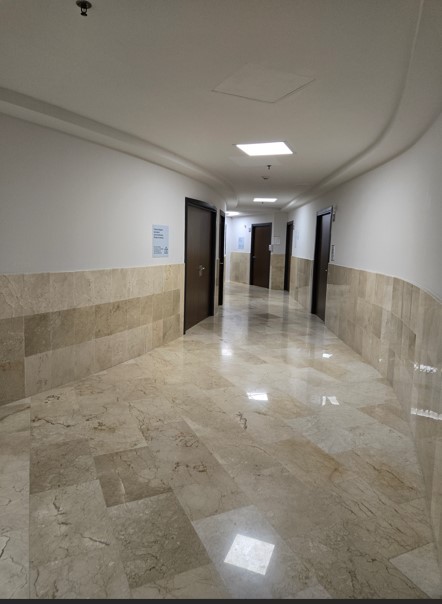
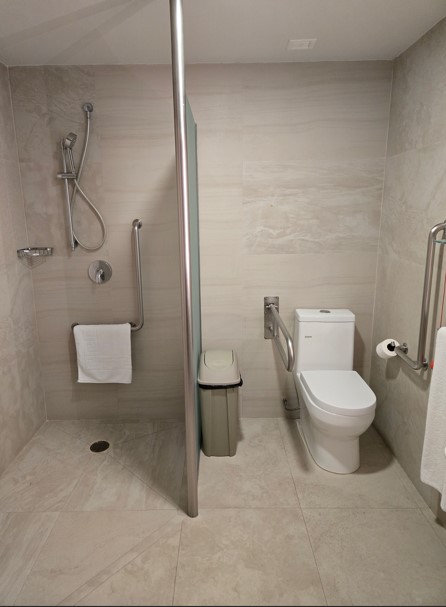
- The hospital was beautiful. The emergency room, hallways, and the room Pat was assigned to were spotlessly clean. In fact, I kept calling it one of the nicest “hotels” I ever saw. His private room was huge, with a large bathroom, a full shower, and a toiletry kit containing necessities, like a toothbrush and toothpaste.
- All of the medical personnel, i.e. the ER doctor, nurses, administrative staff, and the paramedic, who could only communicate with me through Google Translate, were extremely polite and professional. Even the woman who was wearing a white chef’s hat was kind enough to enter his room at exactly noon to deliver a lunch tray containing a sandwich, fruit, yogurt, and juice.
- Before the ambulance ride to the hospital, the doctor who came to our hotel room estimated that it would cost about $2,000 for Pat’s treatment and that we should be back in the hotel by the afternoon. His estimation turned out to be pretty close. I had to put a $3,500 hold on a credit card in order for Pat to receive treatment, and when he was released, the ladies at the front desk provided an itemized list of every single charge, that ending up costing about $2,300.
- The administrative staff was very clear that they did not work with American insurance companies, but they said that we should submit the bill to our insurance company for reimbursement. When we got home, we learned that our insurance company required that the bill had to be translated into English in order to request reimbursement. Using a free online translation app, Pat was able to do the translation. I don’t know how long it will take for our insurance company to process the bill, but we are hoping that our insurance company will reimburse at least a portion of the bill.
- The administrative staff asked us if we had travel insurance and seemed surprised that we did not. (Actually, that surprised us, too.) I don’t know if they would have submitted the charges directly to a travel insurance company. I still think we would have had to pay upfront and get reimbursed later, but I’m not sure about that.
- The only charge we did not have to pay upfront was for the ambulance service because the ambulance company is owned by an American company, so the paramedic said they were going to work with our insurance. She gave me a lengthy application to complete and immediately warned me not to make any mistakes because the form had to be perfect or it would be rejected. As soon as she said that, I put the wrong date for my husband’s birthdate. Good thing she caught my error because I was so flustered and anxious, I probably wouldn’t have noticed that, according to me, Pat was born in 2025. The paramedic quickly ripped up the page and made me start completely over. I tried to be extra careful after that, and I hope I didn’t make any other mistakes.
- As I understand it, citizens and residents in Mexico have universal healthcare, so they would likely go to public hospital or provider in the event of illness or injury. I don’t know if tourists and non-residents are also allowed to go to public facilities, but the doctor in the hotel made clear that he was sending us to a “private” hospital.
- We were in the Hospiten Cancun for about 6 hours before my husband was discharged. The ladies at the front desk called a cab for us, which cost $75 to return to the resort.
- In the end, my husband was still uncomfortable and we had to leave Mexico 2 days early. Since we always buy basic plane fares, we knew we couldn’t change our original flights, so we had to buy 2 more return tickets.
- We are home safe, and Pat was able to follow up with his own doctor. He required more treatment, which included an outpatient procedure, but he is recovering well. Really. He is fine.
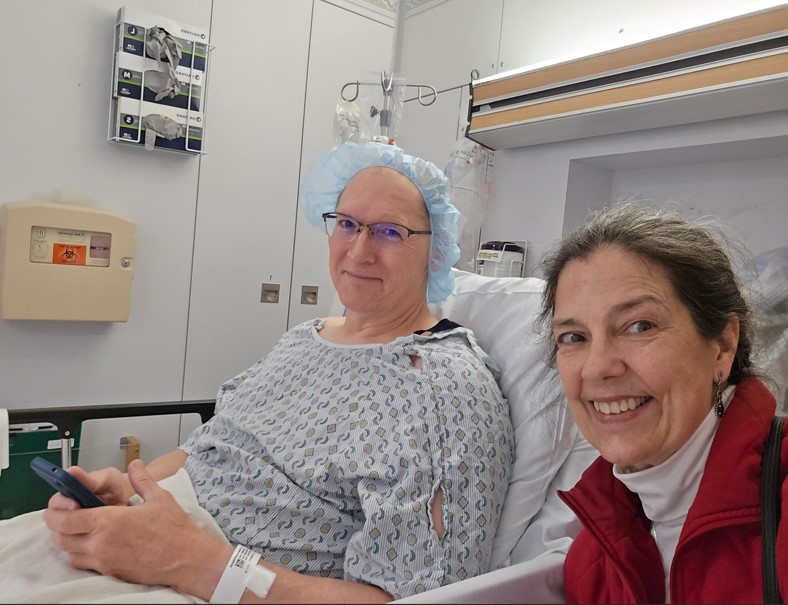
We are still kicking ourselves for not buying travel insurance. Fortunately, we were able to absorb a few thousand dollars in unexpected medical and travel costs, but for many years of my adult life, this would have been a significant financial setback for me.
I have to admit, though, that after experiencing an emergency trip to the Hospiten Cancun, I have a different perspective on the medical “horror” stories we have heard. Thank goodness my husband’s situation did not turn dire, but now I can understand how the hospital could require tens of thousands of dollars upfront in order to provide emergency treatment to someone who comes into the E.R. with something really serious, like a heart attack, for example.
The bottom line is this: ALWAYS BUY TRAVEL INSURANCE.
I promise you we will never travel again without it.
One other thing, Pat thinks he owes me another vacation, but if you see him, please tell him that I don’t expect it and it’s NOT NECESSARY. He doesn’t seem to believe me.
But I wouldn’t say no…
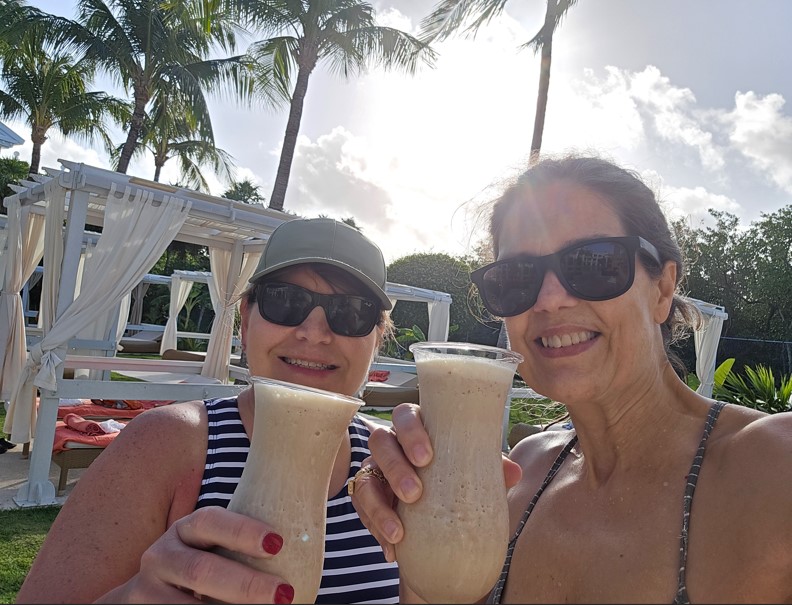

3 Comments
Glad to know that Pat is doing fine, Ann. We’ve had numerous ER visits over 30 years, but not while vacationing outside the US. I imagine communicating through translation was quite a challenge. Glad that even though it was painful for Pat, it wasn’t more dire and life threatening. Hope you still enjoyed what time you had remaining under the circumstances.
Glad to know that Pat is doing fine, Ann. We’ve had numerous ER visits over 30 years, but not while vacationing outside the US. I imagine communicating through translation was quite a challenge. Glad that even though it was painful for Pat, it wasn’t more dire and life threatening. Hope you still enjoyed what time you had remaining under the circumstances.
Thanks Squid! Pat and I both study Spanish, but unfortunately, our vocabulary does not include medical terminology, so communication was a bit frightening. We are so grateful that the experience didn’t turn out worse.